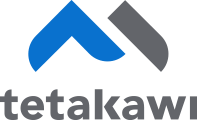Payroll can be complicated—and to make sure it is done correctly, many companies look for professional payroll and benefits administration services. For example, some employee benefits—such as vacation pay and health insurance premiums—are included in the payroll, while others are not. Then, there are accrued payroll and employee benefits that need to be accounted for.
In this post, we'll learn the basics about payroll, the employee benefits that are included and excluded, and the overall impact benefits have on employee compensation.
Types of Employee Benefits
Before we delve into the nuances of payroll and its components, let's understand what employee benefits really mean. By definition, employee benefits are additional financial and nonfinancial remunerations that an employer offers to its employees in addition to a base salary. The purpose of offering these benefits is to attract and retain top talent.
Financial Benefits
Financial benefits can either increase or decrease the net amount employees take home. Examples of financial benefits include:
- Health insurance
- Retirement plans (e.g. 401(k))
- Life insurance
- Disability insurance
- Stock options
- Bonuses and profit sharing
If an employee receives performance-based bonuses, commissions, or profit-sharing as part of their compensation, these employees will have a larger paycheck when they deliver more than expected in a certain time period. On the other hand, if you offer health insurance or a retirement plan as a benefit, your employees’ paychecks will include deductions for their contributions to these plans.
Nonfinancial Benefits
Examples of nonfinancial benefits include:
- Paid time off (e.g., vacation, sick leave, etc.)
- Flexible work arrangements
- Employee wellness programs (e.g., gym memberships, mental health services, etc.)
- Professional development opportunities
- Employee recognition and reward programs
- Childcare and family support programs
These nonfinancial benefits do not impact employee salaries in any way.
Understanding the Elements of Payroll
Payroll is basically the process of calculating and distributing payments to employees for the work they have performed. The purpose of payroll is to ensure that employees are compensated accurately and that these payments are in compliance with legal and tax requirements.
That said, the basic components of payroll are:
- Gross pay: This is the total amount of pay an employee is owed before deductions. It also includes bonuses and commissions that the employee earned.
- Allowances: This is the amount the employer provides in addition to the base salary. It's usually meant to cover work-related expenses, such as travel or work equipment expenses.
- Deductions: These include any amounts that are subtracted from an employee's pay, such as taxes, insurance premiums, and retirement contributions.
- Net pay: This is the amount an employee takes home after deductions are made.
- Year-to-date amounts: Usually shown as YTD, these are the total amount of gross pay, deductions, and net pay that an employee has received so far during the current fiscal year.
Example of Employee Benefits in Payroll
Suppose there's an employee named Sarah. She works for a company that offers health insurance as an employee benefit.
The company has a plan that costs $500 per month. Sarah chooses to enroll in the plan, and her employer agrees to pay for 80% of the premium or $400 per month. This means that Sarah will be responsible for paying the remaining 20% of the premium, or $100 per month.
To make it easy for Sarah to pay her portion of the premium, her employer deducts $100 per month from her gross pay as a payroll deduction. This ensures that the health insurance premium is paid in full each month and that Sarah stays enrolled in the plan.
What Employee Benefits Are Never Included in the Payroll?
There are also some employee benefits that you'll never see as a part of a company payroll. These include:
- Employee discounts: Discounts on products or services offered by the employer or its affiliated companies.
- Free or subsidized meals: Meals provided by the employer onsite or through a third-party provider.
- Gym memberships: Access to onsite or offsite gym facilities paid for or subsidized by the employer.
- Transit benefits: Assistance with commuting costs, such as subsidized transit passes or parking.
In Conclusion
Employees often receive both financial and nonfinancial benefits from their employers, and each type is treated differently by payroll.
If you're concerned about a specific employee benefit and found no information regarding it in this post, feel free to reach out to us at Tetakawi. We are happy to explain what the benefits of payroll are for employers!
Subscribe
Sign up and stay informed with tips, updates, and best practices for manufacturing in Mexico.





